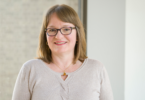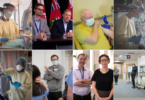Scientists at Sunnybrook Research Institute (SRI) are inventing the future of health care by developing innovative tools and devices that aim to solve some of health care’s most complex challenges. By working with trusted partners in both public and private sectors, our scientists can identify, innovate and protect new technologies, and bring discoveries to the medical marketplace so they reach and benefit more patients. From bench to bedside, Sunnybrook inventors are working to trailblaze patient care one idea at a time.
Vitreous hemorrhage is a leading cause of severe vision loss worldwide. This condition, commonly caused by diabetic retinopathy, occurs when diseased retinal blood vessels rupture, rapidly filling the eye with blood and rendering someone blind within minutes. The traditional treatment for this condition involves a period of watchful waiting to allow for natural resolution, which can take many months. Patients suffer while waiting, facing limitations in physical activity, reduced work productivity and the fear of impending surgery or permanent blindness. If the hemorrhage does not clear, surgery is the only alternative.
Dr. Gary Yau, ophthalmologist and affiliate scientist in Physical Sciences and the Hurvitz Brain Sciences Program at Sunnybrook, is developing a non-surgical, office-based solution that uses the power of sound to restore vision loss caused by vitreous hemorrhage. The technology applies focused ultrasound waves deep within the eye to fragment the hemorrhage and accelerate its clearance, all without the need for incisions.
Partnering with SRI, Dr. Yau founded Vitreosonic, to accelerate the technology and its potential to transform the current treatment paradigm, having a significant impact on how patients may recover from this blinding condition in the future.

Dr. Yau sits with the Vitreosonic technology, which applies focused ultrasound waves to the eye non-invasively.
How did your training as a physician help you as an inventor?
Medical training is, understandably, centred around learning the craft of clinical care. While it may not explicitly focus on invention or product development, health-care professionals are uniquely positioned to contribute to innovation. We work on the front lines, encountering real-world clinical challenges and observe firsthand where current solutions fall short. Our research background trains us to think critically about evidence and improvement, and as end-users of medical technologies, we bring valuable insight into what works in practice, not just in theory.
What knowledge or skills do you need to become an inventor?
Perhaps the most essential skill I’ve observed in successful inventors is simply the ability to get things done.
Invention is about bringing an idea to life. It requires you to be both a dreamer and a doer.
As an inventor, you’re stepping into new territory, so you’ll inevitably hear phrases such as “this isn’t how things are usually done.” The ability to push forward despite those barriers is a necessity.
I certainly am early in this journey, and still have many walls to navigate, but this pursuit has been one of the highlights of my professional life. True invention doesn’t just advance care—it has the power to redefine it. I would encourage those that have a compelling idea to take this less travelled path, as its impact on patients can be profound.
What advice would you give to someone interested in launching a health-care company to commercialize their discoveries?
Absolutely go for it. Inventing and entrepreneurship aren’t the most common paths for health-care professionals, but they offer an incredible opportunity to make a lasting impact on patients’ lives.
I didn’t initially set out to start a company. It began with identifying a compelling clinical need, one that resonated deeply with me. Over time, it became clear that the only viable path to bring this solution to patients was through commercialization.
In that sense, forming a company wasn’t the goal, rather it was the necessary vehicle to move the solution forward.
Translating an idea into a real-world solution often requires knowledge beyond traditional medical training, such as intellectual property, regulatory strategy, and product development. For clinicians interested in innovation, being involved more upstream in the invention process not only broadens our perspective but also allows us to shape the direction and real-world impact of new solutions from the start.
As a health-care professional, your unique clinical insight is a major advantage that can help propel an idea forward. Just as important, though, is knowing where your expertise ends and being resourceful in filling those gaps. It’s rare these days, especially in health care, to develop an impactful invention entirely on your own. I’ve been fortunate to collaborate at SRI with Dr. Kullervo Hynynen and an outstanding engineering team, Bohao Ning PhD and Christopher Hu MSc, whose expertise and partnership continue to be essential in moving this technology ever closer to the bedside.








